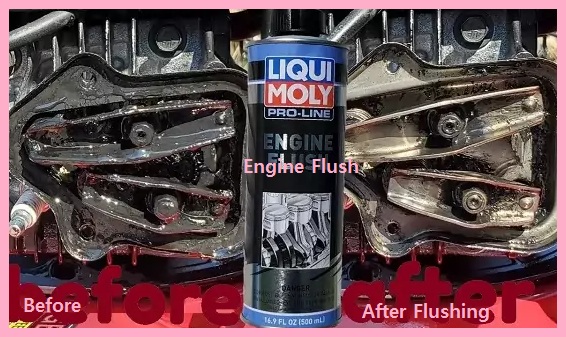Engine Flush is a chemically added aftermarket fluid designed to remove deposits, dirt, and other sticky substances that have accumulated on vehicle engines.
The vehicle’s engine should be flushed at appropriate intervals. The engine flushing process increases the life and performance of the engine.

To clean the engine, first, insert the engine flush into the fuel filler hole and let it idle for approximately 8-14 minutes.
When filled, it mixes with the oil and flows through the engine, removing contaminants.
After a while, drain the oil, replace the oil filter, fill it with new oil and restart the engine.
Importance of Engine Flush
A good engine wash will help loosen deposits, remove dirt, and return the engine to near-new condition.
However, for conventional high-mileage car engines, sludge can be the only barrier to preventing oil from leaking through damaged or cracked seals. Therefore, you should not wash old engines.
When you clean an old engine, the oil seal comes off and engine oil starts to leak. Do not run an engine wash if your vehicle has an engine in this category.
It may not be worthwhile to rebuild an engine in such poor condition without first repairing damaged seals and other defects.
By default, it selects the problem. Whether it’s sludge and deposits affecting performance or cleaning the engine, the seal shows the real thing.
Advantages of an Engine Flush
Cleaning the engine ensures efficient engine operation. It also prolongs the life of the engine. Engine cleaning has the following advantages:
- Eliminate deposit accumulation.
- Give your car a clean plate.
- Helps increase energy efficiency.
- Reduce emissions.
- Reduce engine temperature.
- It is very convenient.
